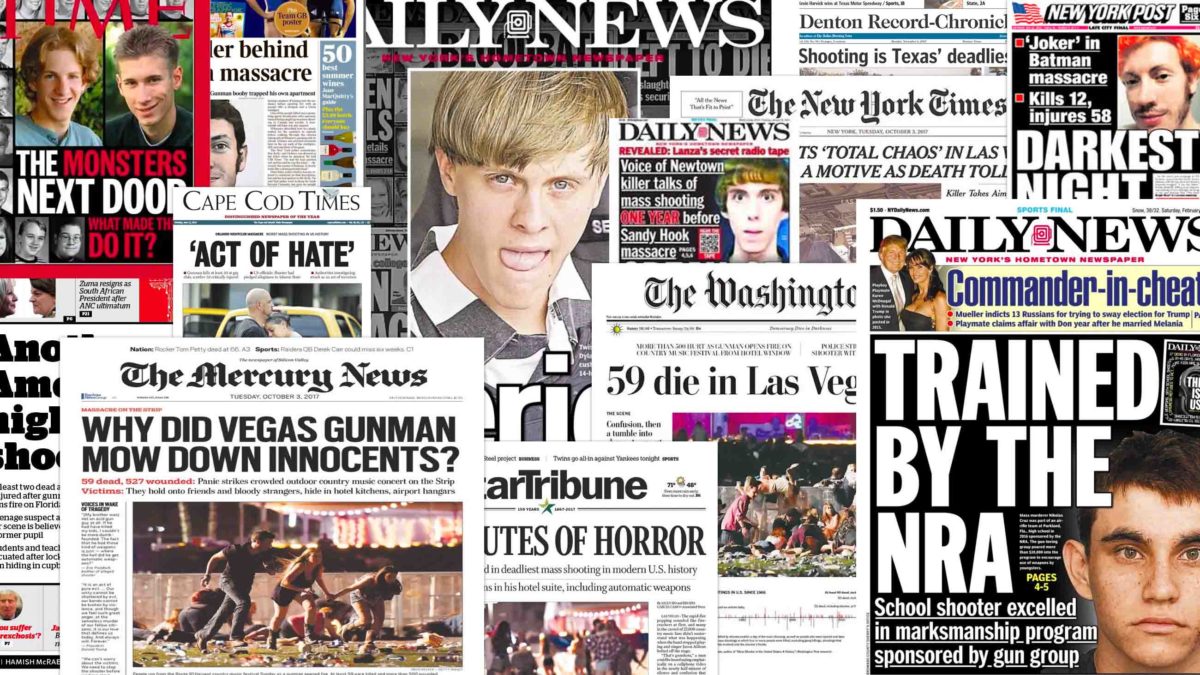Several summers, I’ve taught a special topics course on the politics of gun control in the United States. The politics of gun control is characterized by what Robert Spitzer calls the outrage-action-reaction cycle. A tragic event, often a mass shooting, sparks public outrage, followed by calls for action, met with a reaction that resets the equilibrium until the cycle repeats itself. Students in my class do case studies of the politics of gun control by investigating how newspapers cover mass shootings. They examine, for example, how widely mass shooting are reported, how long news about a mass shooting stays front page news, and how many days go before newspapers drop the story. Generally, the case studies exhibit the outrage-action-reaction cycle very clearly. At the same time, the some mass shootings get more attention than others do and I’ve wondered what accounts for the differences.
In this analysis, various measures of media attention serve as dependent variables. I like the newspaper-based measures, not because newspapers are more important than television or social media but because you can search them, they’ve been around a long time, and are therefore a good way to operationalize a concept like media attention that can be difficult to measure. I particularly like the New York Times front page as a measure of what’s a lead story. Here are what I’d like to use as independent variables:
- number of shooting victims (deaths plus injuries)
- whether the gunman died
- whether gunman knew victims
- when the shooting occurred (year)
It’s easy to think of unique circumstances that make some incidents famous (e.g. was shooter a white supremacist, was celebrity killed, was unusual weapon used) but those factors are so rare and idiosyncratic they don’t help you develop parsimonious general explanations for variation in media coverage. I’m fairly certain the first three items on my list would be statistically significant, but I really wonder about the fourth item, when the shooting occurred. Historically, gun laws change when tragedy galvanizes public opinion. I wonder if mass shootings have happened so often that there’s increasingly nothing “new” about them for the news media. If, controlling for other factors, the coverage of mass shootings is decreasing over time, the analysis would reveal something importance about the politics of gun control and the prospects for reforms.
Mother Jones maintains a great dataset on mass shootings that identifies the population of shootings to be studied along with some basic details about them (like number of victims, gun used, location).

